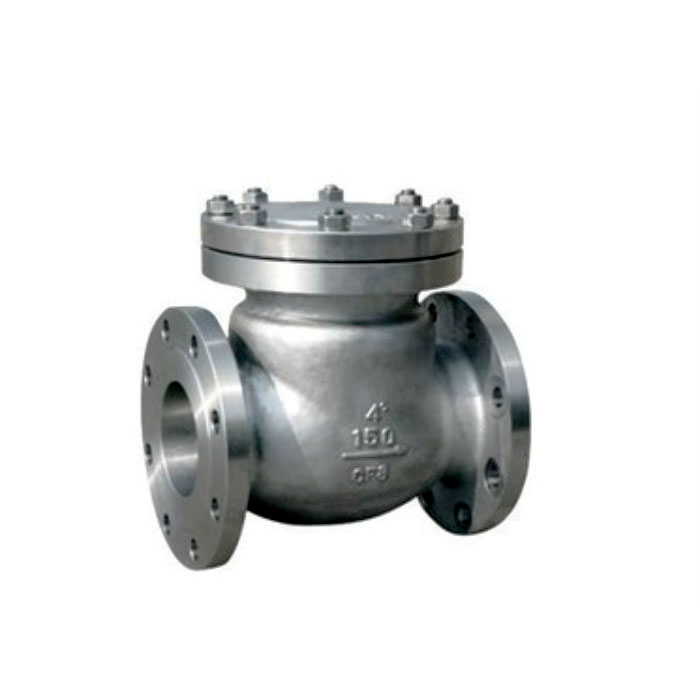How does the check valve work?

A check valve is a valve in which the opening and closing member is a circular flap and acts on its own weight and medium pressure to block the flow of the medium. It is an automatic valve, also known as a check valve, check valve, return valve or isolation valve. Check valves are often used as bottom valves for pumping devices to prevent backflow of water. The combined usage of the check valve and the globe valve provides a safe isolation. The disadvantage is that the resistance is large and the sealing is poor when closed.
The flap motion mode is divided into lift type and swing type. The lift check valve is similar in construction to the shut-off valve and lacks only the valve stem that drives the flap. The medium flows in from the inlet end (lower side) and flows out from the outlet end (upper side). When the inlet pressure is greater than the sum of the valve weight and its flow resistance, the valve is opened. Conversely, the valve closes when the media is reversed.
The swing check valve has a valve that is inclined and rotatable about the shaft, and operates in a similar manner to the lift check valve.The swing check valve has a hinge mechanism and a door-like flap that rests freely against the inclined seat surface. In order to ensure that the valve flap can reach the proper position of the valve seat surface each time, the valve flap is designed in the hinge mechanism, so that the valve flap has enough swinging space and the valve flap is truly and comprehensively in contact with the valve seat.
The flaps can all be made of metal, or they can be inlaid with leather, rubber, or synthetic coverings depending on the performance requirements. With the swing check valve fully open, the fluid pressure is almost unimpeded, so the pressure drop across the valve is relatively small. The valve flap of the lift check valve is located on the valve seat sealing surface of the valve body. In addition to the flap being free to lift and lower, the valve is like a globe valve. The fluid pressure causes the flap to lift from the seat sealing surface. The backflow of the medium causes the flap to fall back onto the seat and shut off the flow. Depending on the conditions of use, the flap can be of all metal construction or it can be in the form of a rubber or rubber ring on the valve disc holder. Like the globe valve, the passage of fluid through the lift check valve is also narrow, so the pressure drop through the lift check valve is larger than that of the swing check valve, and the flow rate of the swing check valve is rarely limited.
If you are interested in more information, feel free to contact us via sales@jhflow.com.